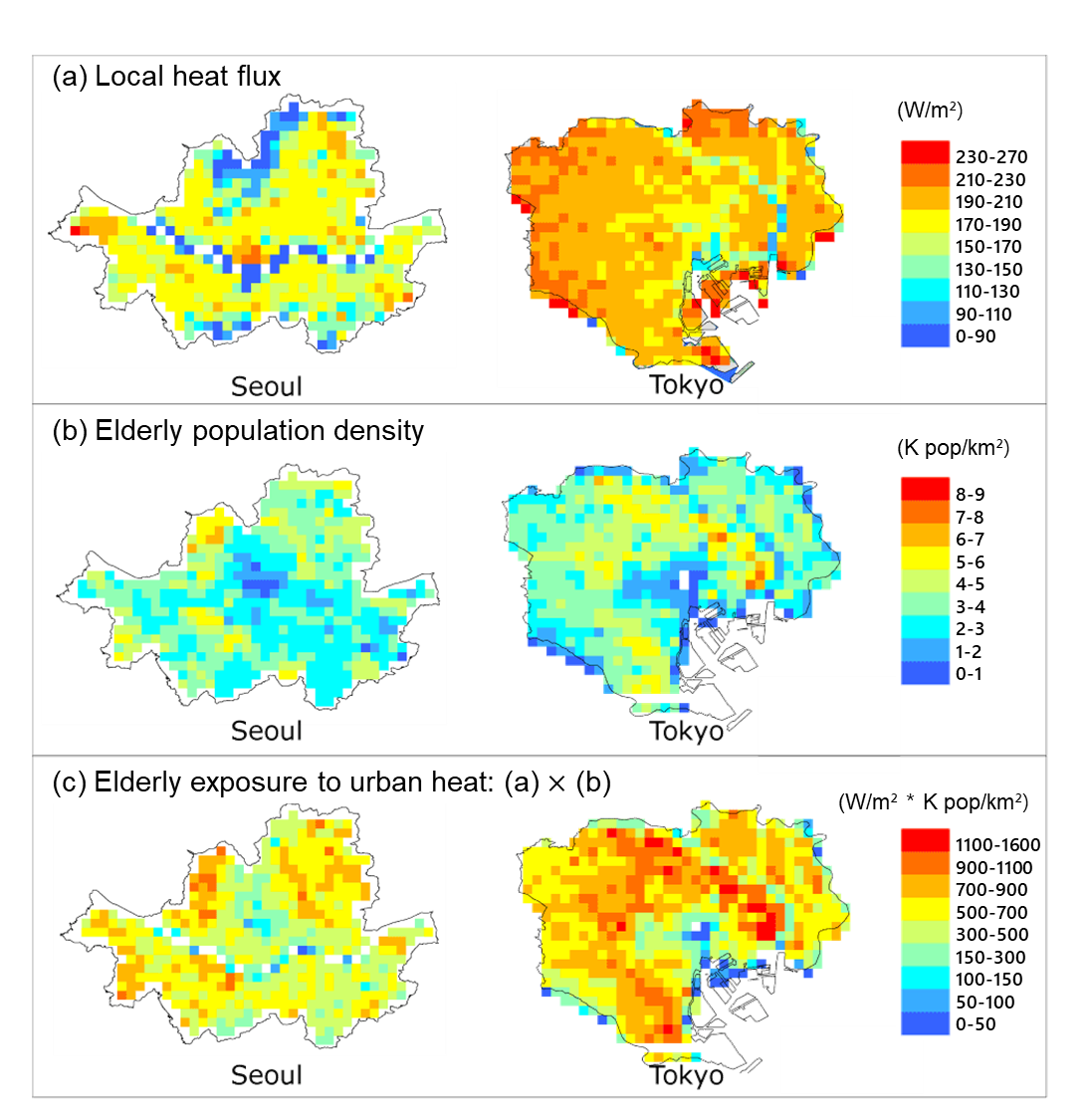Information of Paper
Differing spatial patterns of the urban heat exposure of elderly populations in two megacities identifies alternate adaptation strategies
Authors: Chae Yeon Park, James H Thorne, Shizuka Hashimoto, Dong Kun Lee, Kiyoshi Takahashi
Year: 2021
Journal: Science of The Total Environment, 146455
Keywords
Heat hazard, Urban heat island, Climate change, Sensible heat flux, Adaptive capacity, Elder population vulnerability
Abstract
Mapping the elderly population exposure to heat hazard in urban areas is important to inform adaptation strategies for increasingly-deadly urban heat under climate change. However, fine-scale mapping is lacking, because global climate change projections have not previously been integrated with urban heat island effects especially with urban three-dimensional characteristics for within-city heat risk analyses. This study compared the spatial patterns of deadly heat exposure for elderly populations in two East Asian megacities, Seoul and Tokyo, using current climate (2006-2015) and two future periods (2040s and 2090s). We integrated global warming projections (the Shared Socioeconomic Pathway 5 based on Representative Concentration Pathway 8.5) with local urban characteristics and demographics. We found that, for the historical period, the overall hotspots of elderly population exposure to urban heat was larger in Tokyo because of relatively higher maximum air temperatures and lack of green spaces, whereas in the future periods, Seoul will have larger hotspots because the elderly population density will have increased. About 20% of the area in Seoul and 0.3–1% of Tokyo will be hotpots in the 2040s, and the size of these hotspots increases to 25–26% and 2–3%, respectively, in the 2090s. The spatial patterns of hotspots identify different types of priority areas and suggest that alternative adaptation strategies for two cities are appropriate. The approach introduced here will be useful for identifying sustainable thermal environments in other cities with high density elderly population and severe heat hazard.





